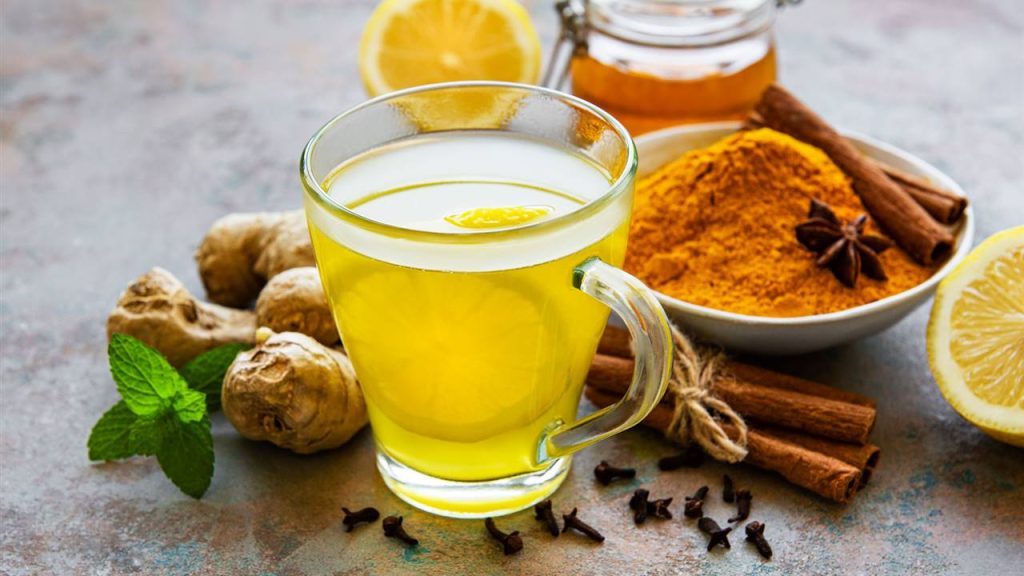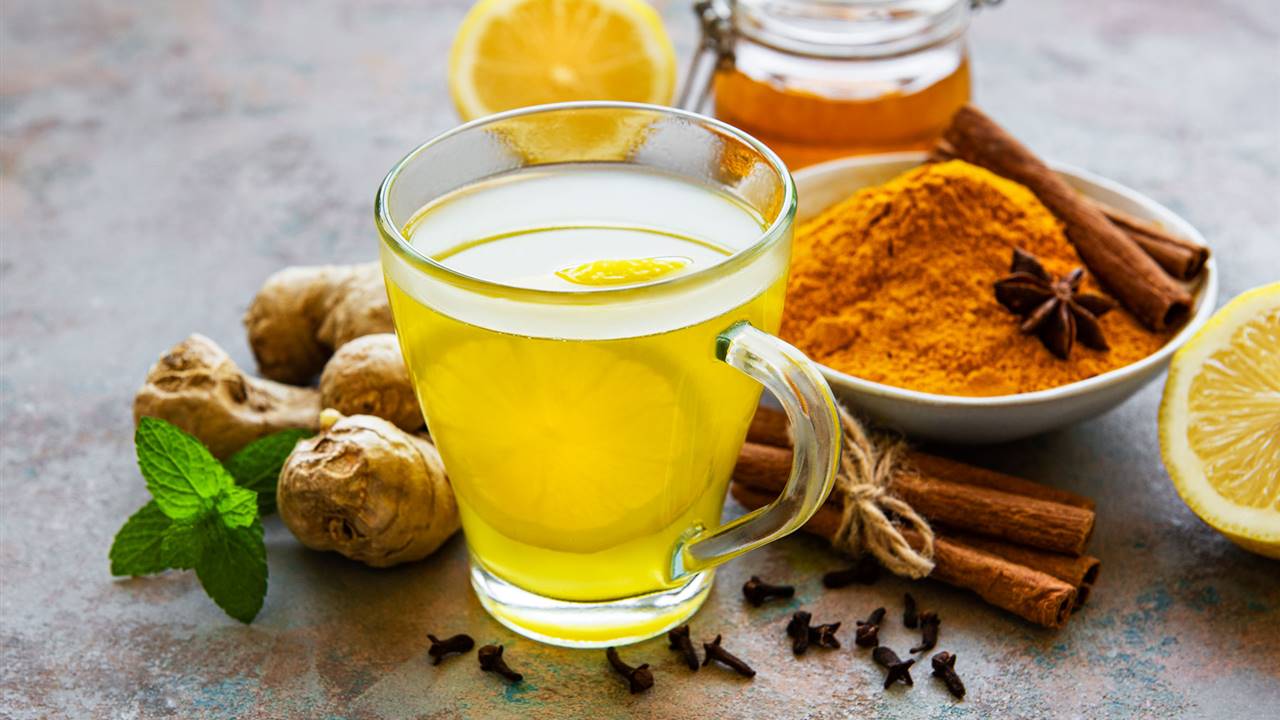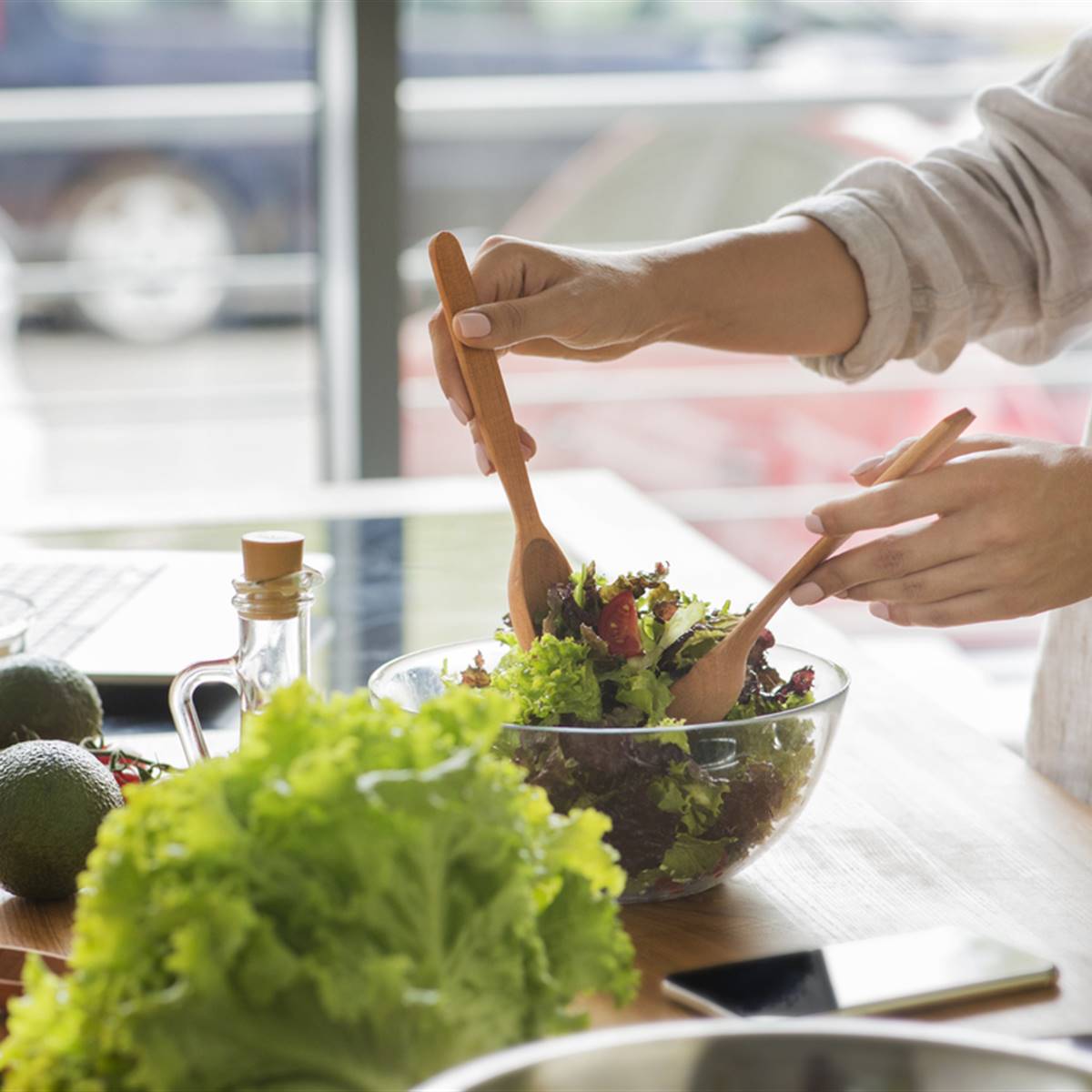The infusion of ginger is delicious, recomposes you and gives you many benefits. We tell you how to make it and we give you several recipes to make it perfect.

- Properties of ginger
- How to make ginger infusion step by step
- 1. Ginger infusion with lemon
- 2. Infusion of ginger, turmeric and cinnamon
- 3. Ginger infusion with digestive herbs
- Contraindications
Ginger infusions can surprise at first by that spicy, intense touch that this spice has, but over time they always end up conquering. The same heat that is noticeable in the mouth when you drink an infusion of ginger, alone or with other plants or spices, is later transformed into a pleasant sensation of internal warmth that comforts and recomposes.
It is not surprising that ginger, both as a spice and in infusion, has gained more and more followers. But, in addition, ginger is not only pleasant. It also provides health benefits that make it highly recommended. An infusion or ginger tea after eating will help you digest; help fight inflammation in your body and help you feel better if you have a cold.
Let’s see now what are the properties of ginger and the benefits of taking it in infusion.
Then we will tell you all the tricks to make a ginger infusion well and we will give you several recipes for infusion of ginger with other plants, so that you have different options of flavors that combine, according to the benefit you want to enhance.
PROPERTIES OF GINGER
Ginger owes its medicinal potential basically to the volatile components of the essential oil it contains, such as zingiberene, but also to its pungent substances or oleoresins, especially gingerols and searols.
It is attributed properties as a digestion stimulant, expectorant, anti-inflammatory and antispasmodic. It also acts as an antipyretic, lowering fever; lipid-lowering, reducing cholesterol and triglycerics; and also, as an antiemetic, calming nausea.
In herbalists, and also in many pharmacies, they recommend ginger to relieve digestive problems, such as stomach upset, heavy digestion, indigestion or dyspepsia, gastroenteritis and punctual constipation. It has the ability to restore and tone damaged gastrointestinal muscles. A very practical way to take advantage of these properties is to take an infusion of ginger after eating.
Ginger is also a typical herbal remedy to combat the urge of vomiting and to treat vertigo and dizziness on travel.
It is no less useful to relieve flu processes, with cough and congestion in the airways, to reduce tenths of fever and activate sweating. Taking ginger infusion will not only help us fight the infection but will also comfort us and help keep us hydrated.
Ginger has also been indicated to mitigate allergy symptoms, such as rhinitis and itchy throat.
HOW TO MAKE GINGER INFUSION STEP BY STEP
To make our ginger infusions we will use the rhizome or underground stem, fresh or already dried, chopped or powdered. You can find it fresh in most food stores, although it is preferable to choose it organically grown, as they sell it in stores specializing in organic food. Dried, chopped or powdered, you will also find it in many of these specialized stores and herbalists.
The classic way to prepare a ginger infusion is by making an infusion of ginger and lemon, but from here the variations can be numerous. Ginger marries wonderfully with other spices and also with different types of tea, so that ginger infusion lends itself very much to experimenting with delicious combinations.
It combines very well with turmeric, cinnamon, saffron, black tea, green tea or oolong tea, with cloves and also with some medicinal plants such as marshmallow, mint, herb and licorice.
1. GINGER INFUSION WITH LEMON
This ginger infusion is a classic, very simple to make but delicious. Lemon balances ginger and nothing else is needed! We’ve sweetened it here, but you can do without the sweetener if you prefer, or use an alternative.
- Cut the ginger into slices. There are those who always prefer to peel the rhizome and there are those who choose not to, because it is not essential. Do it as you prefer.
- In a saucepan of water, heat it over low heat and add a lemon rind.
- As soon as it starts to boil, remove it from heat.
- Add whole cane sugar or another healthy sweetener to taste and stir well.
- Let it sit for about 8 to 10 minutes, covered.
- Strain it and serve. If you wish, you can add the juice of a lemon.
You can make the variations you want. For example, instead of lemon juice, you can use rind and lime juice, with which ginger fits very well. Among the sweeteners, you can opt for honey, agave or maple syrup or even brown rice syrup.
2. INFUSION OF GINGER, TURMERIC AND CINNAMON
Turmeric is another rhizome with anti-inflammatory properties and combines very well with ginger. Cinnamon provides its antioxidants and provides a sweet nuance, although you can add some sweetener if you wish.
To prepare the ginger infusion with cinnamon and turmeric, follow these steps:
- Put 1/4 liter of water to boil in a saucepan.
- Peel the ginger and turmeric (although it is not essential) and separate two slices of each.
- Pour the plants into the saucepan and keep them for about 5 minutes, stirring occasionally.
- Once that time has elapsed, turn off the heat and let it rest for 5 more minutes, covered.
- Strain and, optionally, add the juice of a lemon.
If you want to sweeten this infusion of turmeric and ginger, it will look great with agave syrup.
If you find it more comfortable, you can also use ginger and turmeric powder, a teaspoon of dessert each.
3. GINGER INFUSION WITH DIGESTIVE HERBS
To make a digestive tisane with ginger we propose you to combine it with marshmallow, licorice, condurango and herb, which you will find in your trusted herbalist. You can make, for example, with 15 grams of each plant (marshmallow and licorice, root) and mix them in equal parts.
This recipe is for a cup of water (if you’re preparing for more people, multiply the amounts):
- Set aside 5 grams of your ginger rhizome, marshmallow and licorice root, condurango and herb blend.
- Boil the mixture in a cup of water for 5 minutes.
- Remove from heat and let stand for 10 more minutes.
- Strain well and you have it ready to drink.
This tea can be kept in the fridge for a couple or three days if necessary. It does not need a sweetener, because the plants that accompany ginger balance the flavor very well.
CONTRAINDICATIONS
Ginger is attributed many health benefits, but also some contraindications that you should not lose sight of.
Given its high content of essential oil, ginger, in all its forms, should be consumed with great caution or simply avoided during pregnancy and lactation. Also, in case of irritable bowel and gastroduodenal ulcer and in certain neurological diseases.
It should also be noted that, in some sensitive people, its consumption can cause diarrhea, stomach discomfort and insomnia, and that it should not be consumed if anticoagulant or antiplatelet medications are being taken.








